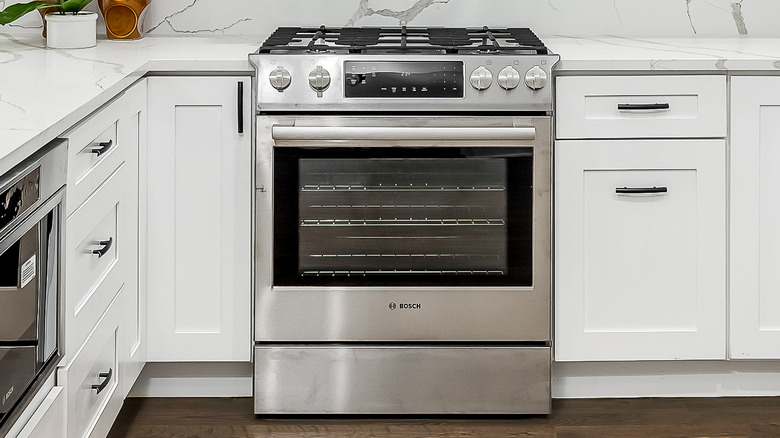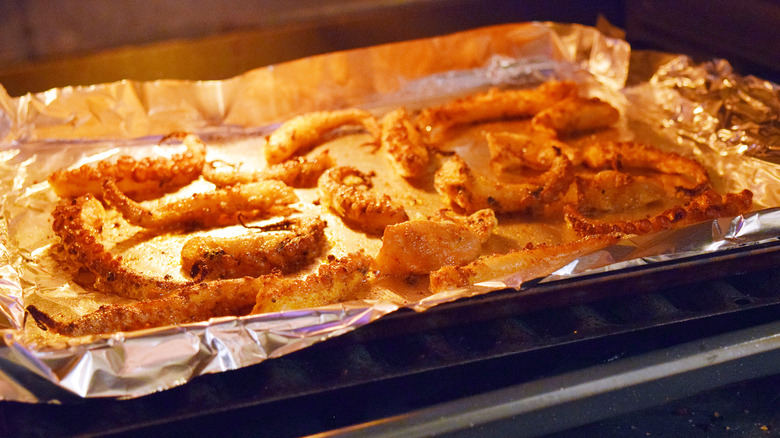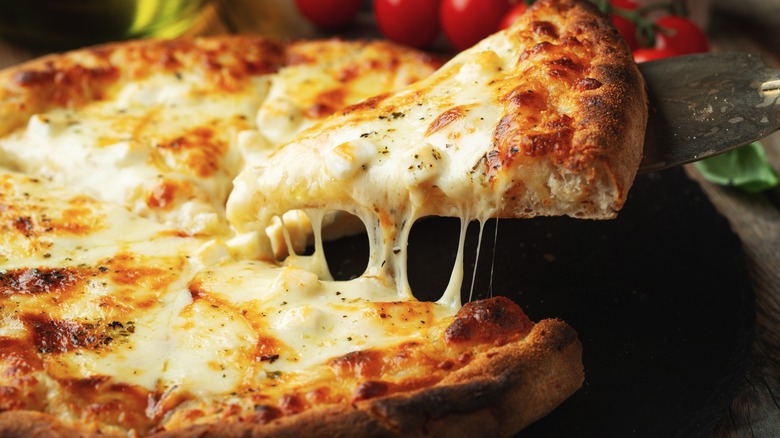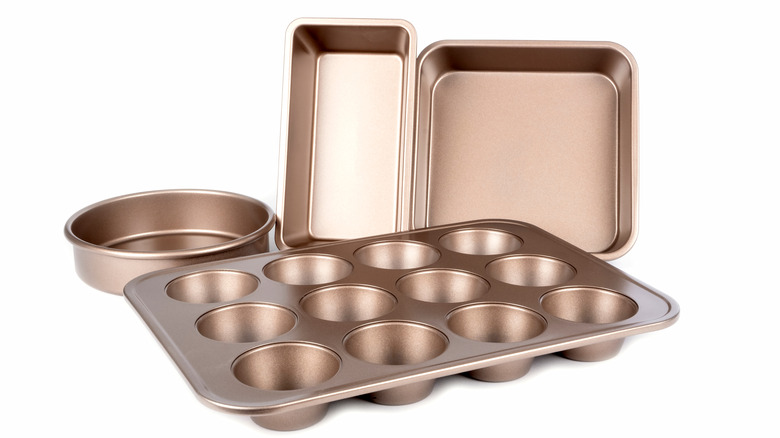What Is The Drawer Under Your Oven For?
You've undoubtedly noticed a drawer below your oven if you have one. If you've never used it or opened it out of curiosity before, there are a few things you may stumble across when you do. Turns out that the drawer can wear many hats. You may come across a dusty slotted pan, a deep and empty bin, or various sheet pans the prior tenant or owner left behind.
If you're wondering about what your drawer could be and how you can make use of it, give it an open and see what you find. If you don't discover a hidden stash of cash or a time capsule, odds are you'll notice one of three things. Depending on the appliance, the drawer under your oven could function as a broiler, a warming spot, or for general storage purposes. And if still in doubt, you can consult your appliance's manual if you've hung on to it.
It may be a broiler
In a natural gas stove, that drawer may function as a broiler. The giveaway will be if your oven comes with a rack and a broiler sheet in the drawer. If the broiler sheet or rack is missing, you'll see grooves along the side of the drawer where they fit in. It is usually a slotted insert over a lipped pan to catch drippings that slides into the grooves. You can replace that missing pan with a quick online search or a trip to your home goods store.
Your broiler is essentially just an upside-down grill — direct high heat from a flame — and can be used for dishes you'd make on your outside appliance. Charred corn on the cob in the middle of February? Why not? It's also perfect for crisping and melting. Give your lasagna some delicious burnt edges or melt cheese over your nachos in a matter of minutes. But, be advised that food can burn quickly in a broiler.
It could serve as a warming drawer
If you're entertaining a large group with several courses, or kitchen time management just isn't your forte, your oven may have a function indicating that the drawer can be used to keep your food warm while you continue using the oven to make other dishes. You can even make your food ahead of time and be able to mingle with your guests instead of working away in the kitchen during cocktail hour.
Warming drawers are typically found on electric ovens. Some may have a warming drawer function or a knob indicating a low, medium, or high-temperature setting. This will vary from oven to oven, but a standard warming drawer will maintain an even temperature of around 140 to 230 degrees Fahrenheit. For baking aficionados, the warming drawer can also be used to proof dough and help bread rise.
Keep in mind it's for warming foods that are already hot. Its purpose is to keep food at a temperature that is conducive to serving, much like a warming lamp in a professional kitchen. The drawer is most likely not best for reheating and definitely not for cooking. If the food has reached room temperature or cooler, the warming drawer will not bring it to a high enough temperature to kill off any bacteria, nor will it heat it thoroughly enough to be enjoyable to consume.
It's an extra storage spot
If the drawer is deep with no rack or broiling pan and your oven's control panel has no setting for a warming drawer, you've probably found yourself an extra storage spot for kitchenware and odds and ends.
Do keep safety in mind and use common sense when choosing what to stash below your oven. Nothing that could catch on fire or melt belongs in that spot. Pans with plastic handles, wooden spoons, plastic spatulas, old takeout containers, assorted recipe printouts or rolls of wax paper, aprons or oven mitts, or even your winter sweaters, have no place being stored in that drawer. Save it for stacking baking sheets, metal or cast iron pans, or anything else you'd be comfortable putting in the actual oven. It's the perfect spot for that springform cake pan you use once a year or that muffin tin you only pull out on the occasional Sunday morning.
When your oven is cranked up to 425 degrees Fahrenheit, that drawer (and anything stored in it) will get pretty toasty.



